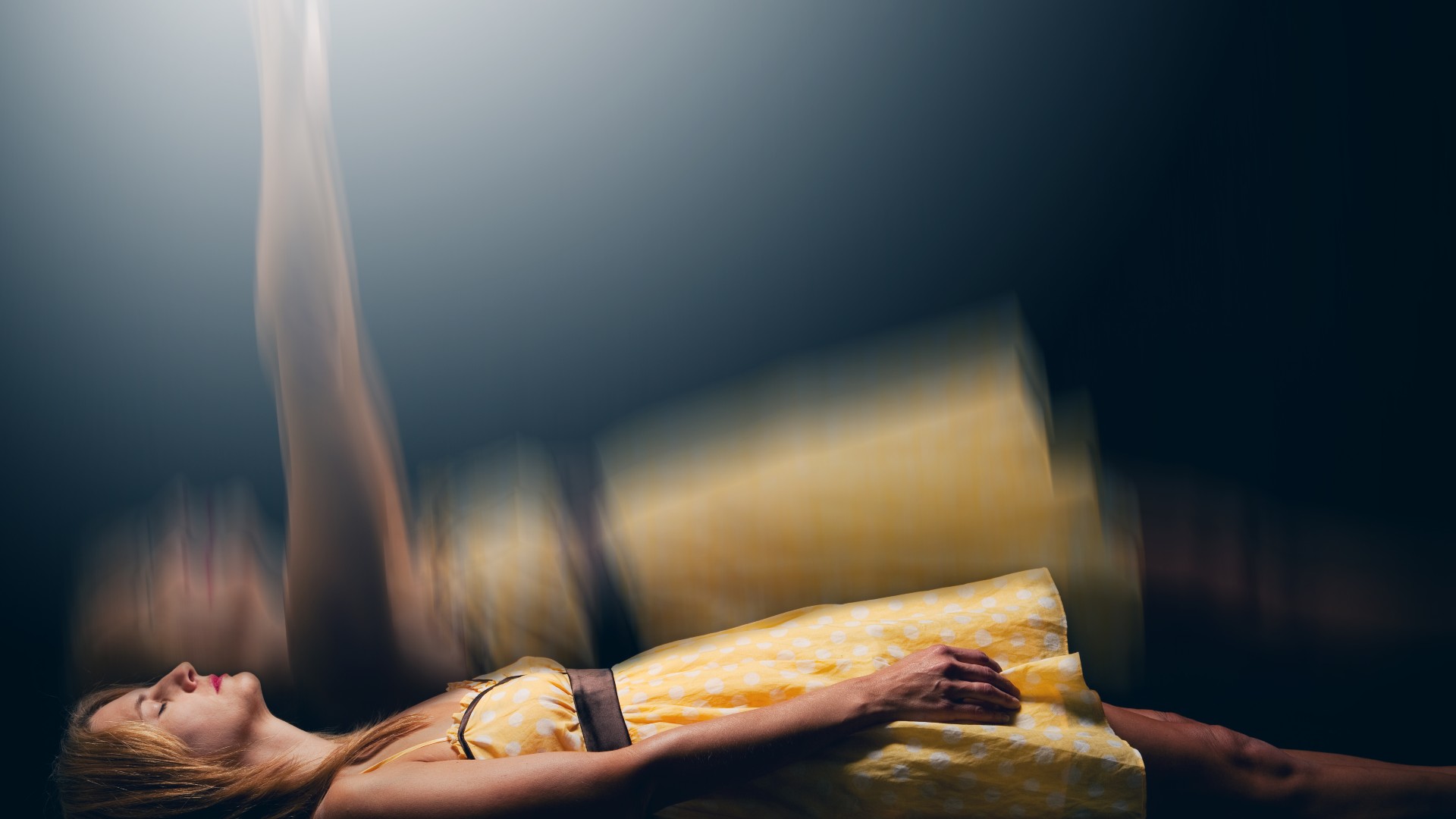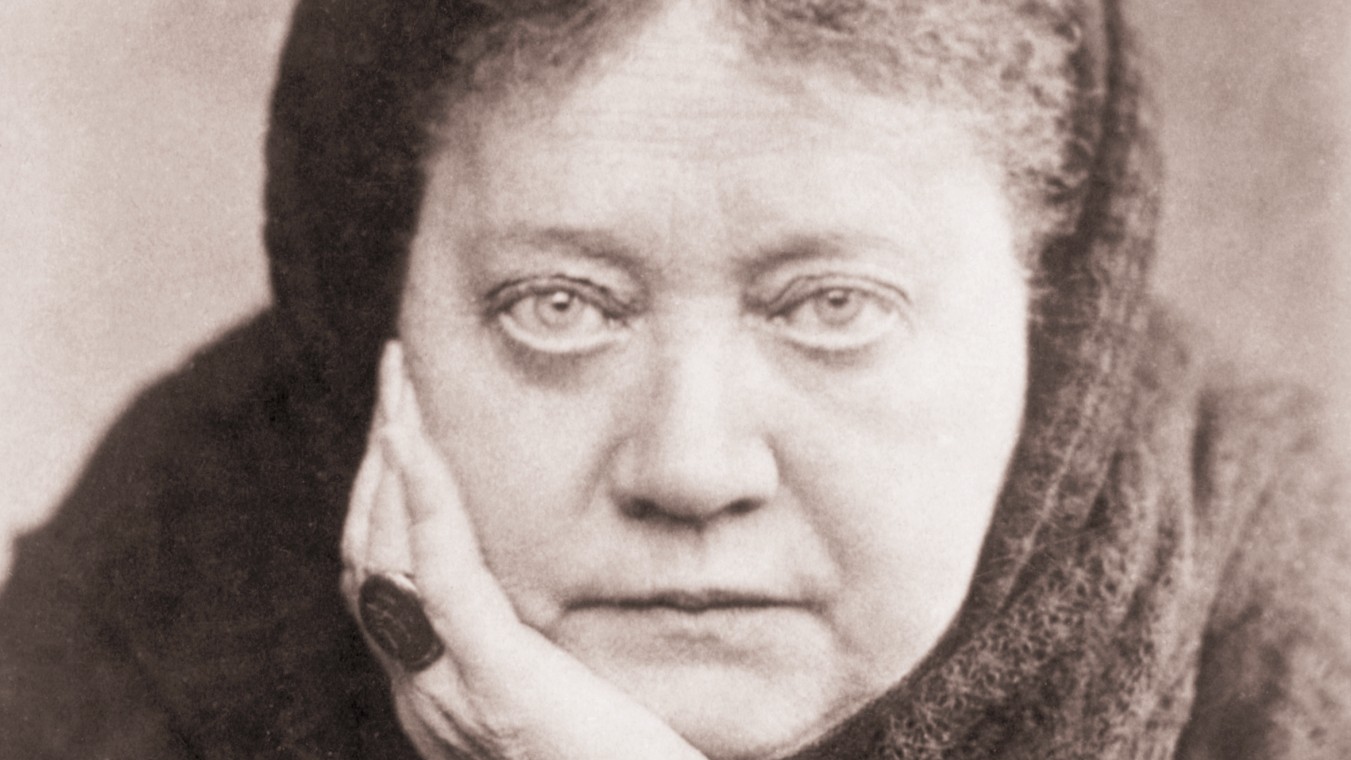Astral projection: Facts and theories
Astral projection is the supposed act of leaving your body while sleeping — but is it real?

What is astral projection? The phenomenon was featured in the 2016 blockbuster "Doctor Strange,"and the sequel "Doctor Strange in the Multiverse of Madness", where the titular superhero has the ability to separate his physical body from his spiritual one and engage in fights.
Netflix's series "Behind her Eyes" utilized the technique as a major aspect of its plot, where multiple characters have mastered the art. ) Yet Astral Projection is not just another creation of Marvel maestro Stan Lee or Netflix producers, it is a spiritual practice with a long history.
Surveys suggest that between 8 and 20 percent of people claim to have had something like an out-of-body experience at some point in their lives — a sensation of the consciousness, spirit, or "astral body" leaving the physical body. While most experiences occur during sleep or under hypnosis, some people claim to do it while merely relaxing.
Astral projection is fun and fascinating — but is it real?
History of astral projection

The idea that humans can leave their bodies during dream states is ancient. Countless people, from New Agers to shamans around the world, believe that it is possible to commune with cosmic intelligence through visions and vivid dreams experienced during astral projection, also known as out-of-body experiences. However it's most recent resurgence has its roots in the spiritual boom of the 19th century and early 20th century.
"The idea comes from a 19th century mystical system called theosophy which claims that we have seven bodies from the lowest physical to the highest spiritual and mental bodies" Dr Susan Blackmore told HowStuffWorks during an interview.
According to John L Crow in his paper "Taming the Astral Body: The Theosophical Society's Ongoing Problem of Emotion and Control" The Theosophical Society was founded in New York in 1875 by Helena Blatavsky. According to Susan Blackmore in Psychology Today; "She claimed to have travelled the world, studied with Tibetan gurus, contacted the dead, and learned to reach higher planes with Hindus and Buddhists".
Get the world’s most fascinating discoveries delivered straight to your inbox.
Theosophy teaches that there are 'Seven Bodies of Man', the third of which is 'the astral body'. According to Blackmore: "the astral body can leave the physical and etheric bodies behind and go traveling on the astral planes". According to Engelberg Ideas, Theosophy had a profound effect on artists and Scientists in the 19th and early 20th century. As Astral Projection became a subject of popular fiction we can see some of the origins of its use in films such as 'Doctor Strange'. In Dennis Wheatley's 1941 novel Strange Conflict, the hero the Duc De Richleau uses it to travel the globe in his sleep.
Though originally a private, quasi-religious meditative practice it has — like many New Age beliefs — been commercialized. Astral travel can be big business, and there are many books, seminars, DVDs and other materials that promise to teach students how to leave their physical bodies and access other dimensions. But does astral projection work?
Is astral projection real?

Practitioners of astral travel insist that the experience must be real because it seems so vivid, and because some of the experiences are similar, even for people from different cultures. But it's not surprising that many people who try astral projection have similar experiences — after all, that's what the term "guided imagery" is: when an authority (such as a psychologist or astral travel teacher) tells a person what they should expect from the experience.
It may be a profound experience, but the fundamental problem is that there's really no way to scientifically measure whether or not a person's spirit "leaves" or "enters" the body. The simplest and best explanation for out-of-body experiences is that the person is merely fantasizing and dreaming. Because there is no scientific evidence that consciousness can exist outside of the brain, astral projection is rejected by scientists.
Why hasn't astral projection been proven scientifically? Some claim it's because mainstream scientists are closed-minded and refuse to even look at evidence that doesn't fit their narrow worldview. However, in science those who disprove dominant theories are rewarded, not punished. Proving the existence of psychic powers, astral projection or alternative dimensions would earn the dissenting scientists a place in the history books, if not a Nobel Prize.
Scientifically testing the validity of astral travel should be quite simple; for example, you might hide ten unknown objects at different locations and then ask a person to project their consciousness to each place and describe exactly what's there. Either the descriptions match or they don't.
According to researcher Susan Blackmore, author of "Beyond the Body: An Investigation of Out-of-the-Body Experiences," people who experience astral travel "have been found to score higher on measures of hypnotizability and, in several surveys, on measures of absorption, [a] measure of a person's ability to pay complete attention to something and to become immersed in it, even if it is not real, like a film, play, or imagined event." Out-of-body experiencers are more imaginative, suggestible, and fantasy-prone than average, though have low levels of drug and alcohol use, and no obvious signs of psychopathology or mental illness.
In 2021, the Medical Science journal Cureus published a paper entitled "Astral Projection: A Strange Out-of-Body Experience in Dissociative Disorder" which examined a purported case of Astral Projection in a 15 yr-old boy. The paper detailed the many possible causes of out of body experiences, stating: "The literature on the cause of OBE mainly entails various neurological conditions like epileptic seizures and migraine, deficient visual, vestibular, and multisensory processing, near-death experiences, and psychedelic drug use.
These peculiar experiences have been described as secondary to the psychopathology of psychiatric disorders such as schizophrenia, personality disorders, depersonalization, anxiety, dissociative disorders, and depression". When discussing the particular case the paper was examining, the authors stated that the patient had frequently ran away from home, as well as having "shown decreased social interest, irritability, and persistent sadness of mood for the past two to three months" according to the report.
Having ran away, the patient would often assume the identity of an 18 year-old electrician and it was during one such event that he had what appeared to be an out of body experience. They concluded that due to his circumstances the patient was mostly likely in a dissociative state and that in this case: "astral projection can be construed as a part of the dissociative experience"
Yet there are other possible causes of out-of-body experiences and astral projection. In 2017, a study reported on by The Atlantic analysed some 210 patients who suffered with vestibular disorders. The Vestibular system within the inner ear is responsible for providing the body with its sense of balance and issues relating to this system can result in a sense of 'floating'. Questioning the patients, it was discovered that some 14% reported out of body experiences compared to the 5% without any form of vestibular issues.
We need not resort to such artificial tests, since the real world provides countless opportunities for astral projection to be demonstrated beyond any doubt. If proven, astral travel would be incredibly useful to the world. There would be no need to send humans into very dangerous conditions — such as nuclear disasters — to determine what the situation is.
People whose consciousnesses can fly and move through walls would save lives during natural disasters such as earthquakes, easily moving through rubble and collapsed buildings to locate survivors and direct rescue workers to them. Astral projectors, like psychics, would be invaluable to police during mass shooting and hostage situations, describing exactly how many suspects there are, where in the building they can be found, and other crucial details. The absence of these individuals during life-or-death situations is revealing.
Though astral projection practitioners insist their experiences are real, their evidence is all anecdotal — just as a person who takes peyote or LSD may be truly convinced that they interacted with God, dead people, or angels while in their altered state. Astral projection is an entertaining and harmless pastime that can seem profound, and in some cases even life-changing. But there's no evidence that out-of-body-experiences happen outside the body instead of inside the brain. Until the existence of an astral plane can be proven — and made accessible — there's always the continuing adventures of the Sorcerer Supreme.
Additional resources
This study from Frontiers in NeuroScience assesses an attempt at voluntary out of body experiences. Healthline explores some of the possible causes of out of body experiences. Jodi Walker attempts to project her soul across the universe in this piece for the Ringer.
Additional Links
Bibliography
- Nina Khan; "A Beginner's Guide to Literal Out of Body Experiences" Bustle, Oct 14th 2020
- John L Crow "Taming the Astral Body: The Theosophical Society's Ongoing Problem of Emotion and Control" Journal of the American Academy of Religion, 2012
- Susan Blackmore: "Out-of-Body Experiences: Into the Astral?" Psychology Today, June 27 2019
- Engelberg Ideas
- Varchasvi Mudgal, Rashmi Dhakad, Rahul Mathur, Ujwal Sardesai, Virendra Pal "Astral Projection: A Strange Out-of-Body Experience in Dissociative Disorder" Cureus, August 2021
- Sarah Zhang: "Why People Have Out-Of-Body-Experiences" August 2021



